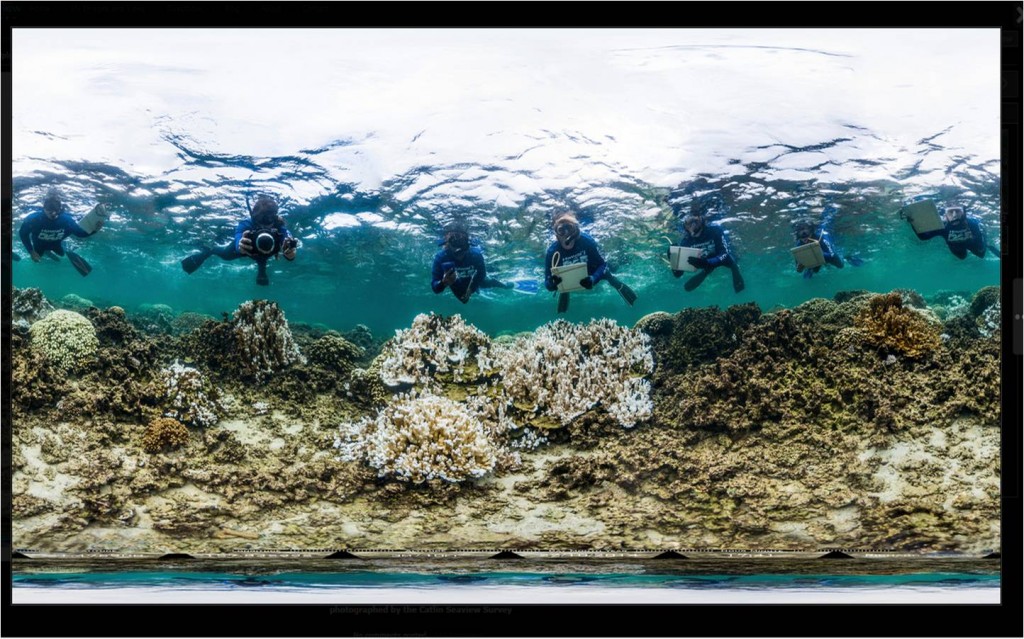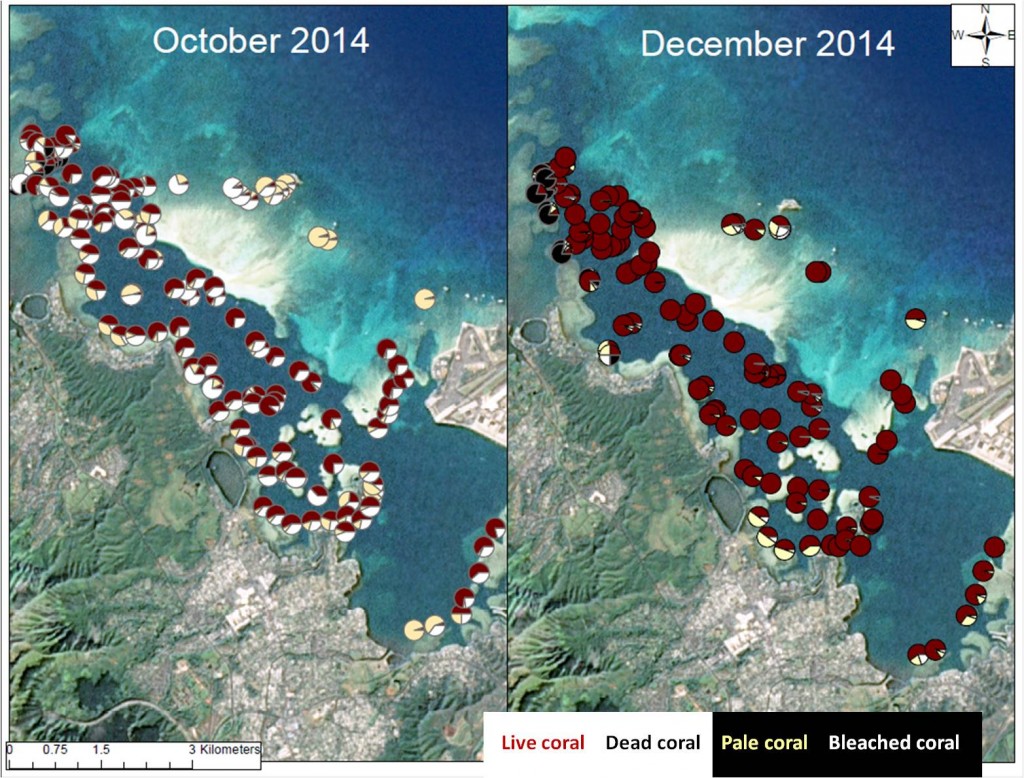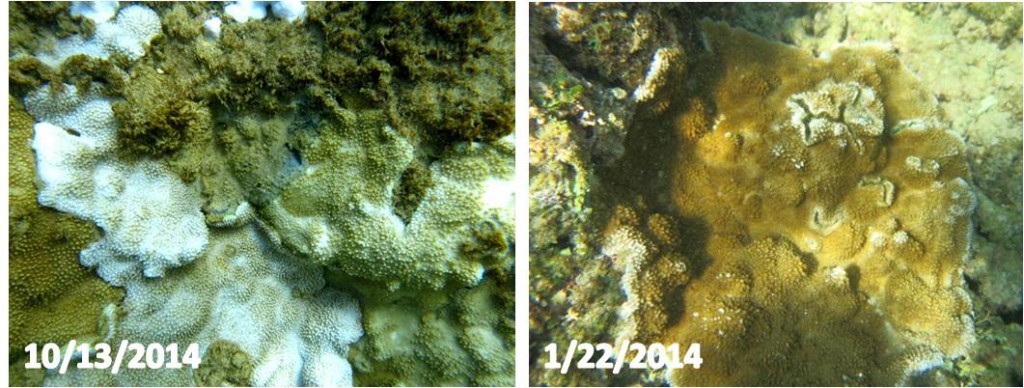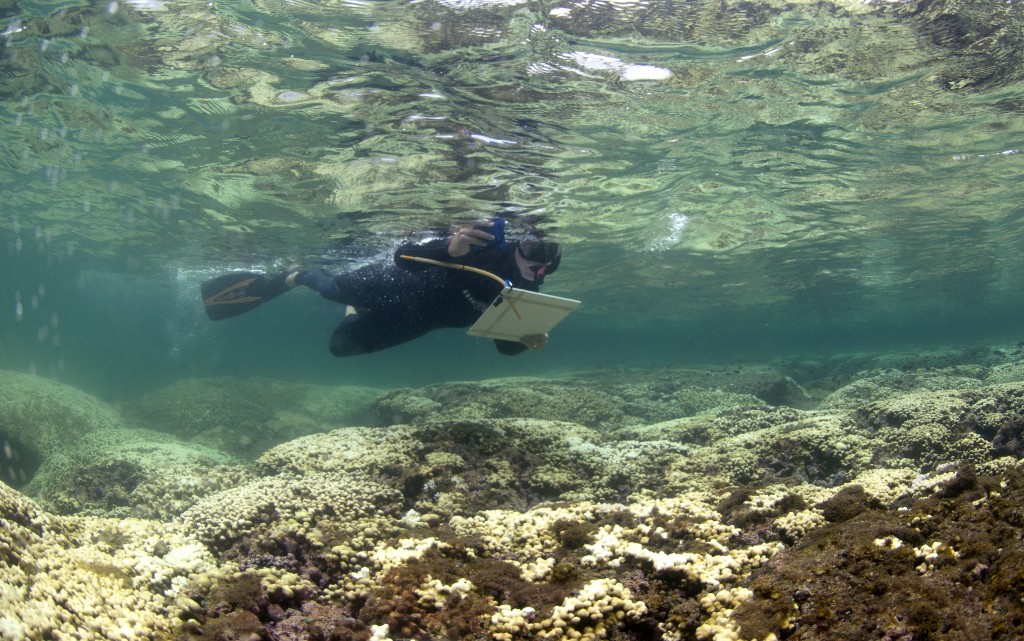Coral Bleaching 2014
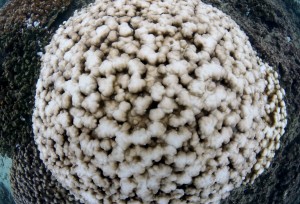 |
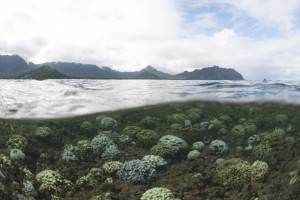 |
 |
photo credit: Catlin Seaview Survey
LATEST UPDATE: 1/28/2015
DAR and HIMB staff are to seeing signs of recovery from coral bleaching in Kaneohe Bay, Kauai, and Maui. To hear it in their own words, WATCH VIDEOS FROM THE FIELD:
Full Press Release: https://dlnr.hawaii.gov/blog/2015/01/29/nr15-018/
In Sept and October 2014, the National Oceanic and Atmospheric Administration (NOAA) Coral Reef Watch program calculated high coral bleaching alert levels for waters around Hawaii. These warnings indicate high ocean temperatures, and thus a high likelihood for bleaching. Corals can recover from bleaching if temperatures return to a normal range. It can take from weeks to years for a coral reef to fully recover from a bleaching event. A certain amount of annual bleaching is expected and can typically be seen between July – September, the peak season for the Pacific.
DAR Biologists also surveyed several locations on Maui.
50 individual coral colonies were tagged in Kaneohe Bay to monitor for recovery from the bleaching event.
DAR continues to work with numerous partners including the Hawaii Institute of Marine Biology (HIMB), The Nature Conservancy (TNC) to gather data about this bleaching event
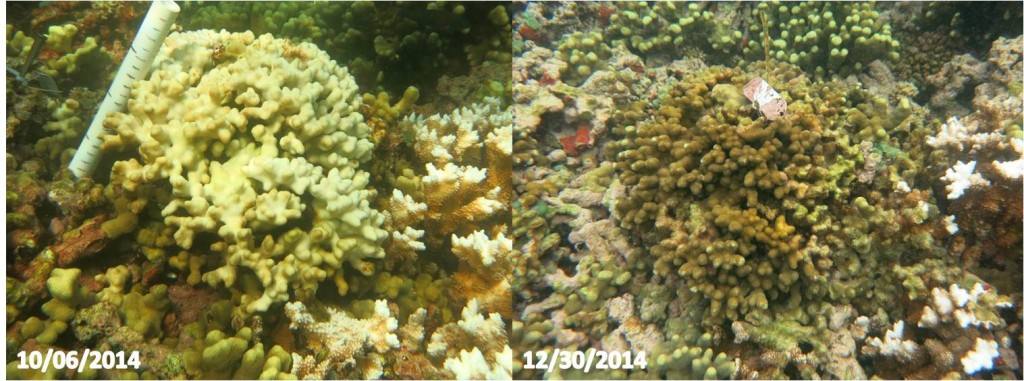
Bleached coral (left) and recovered coral (right) in Kaneohe Bay, Oahu – photo credit: DAR
 If you see coral bleaching please make an online report through Eyes of the Reef (EOR): www.eorhawaii.org/make-a-report. Please send photos to: [email protected].
If you see coral bleaching please make an online report through Eyes of the Reef (EOR): www.eorhawaii.org/make-a-report. Please send photos to: [email protected].
